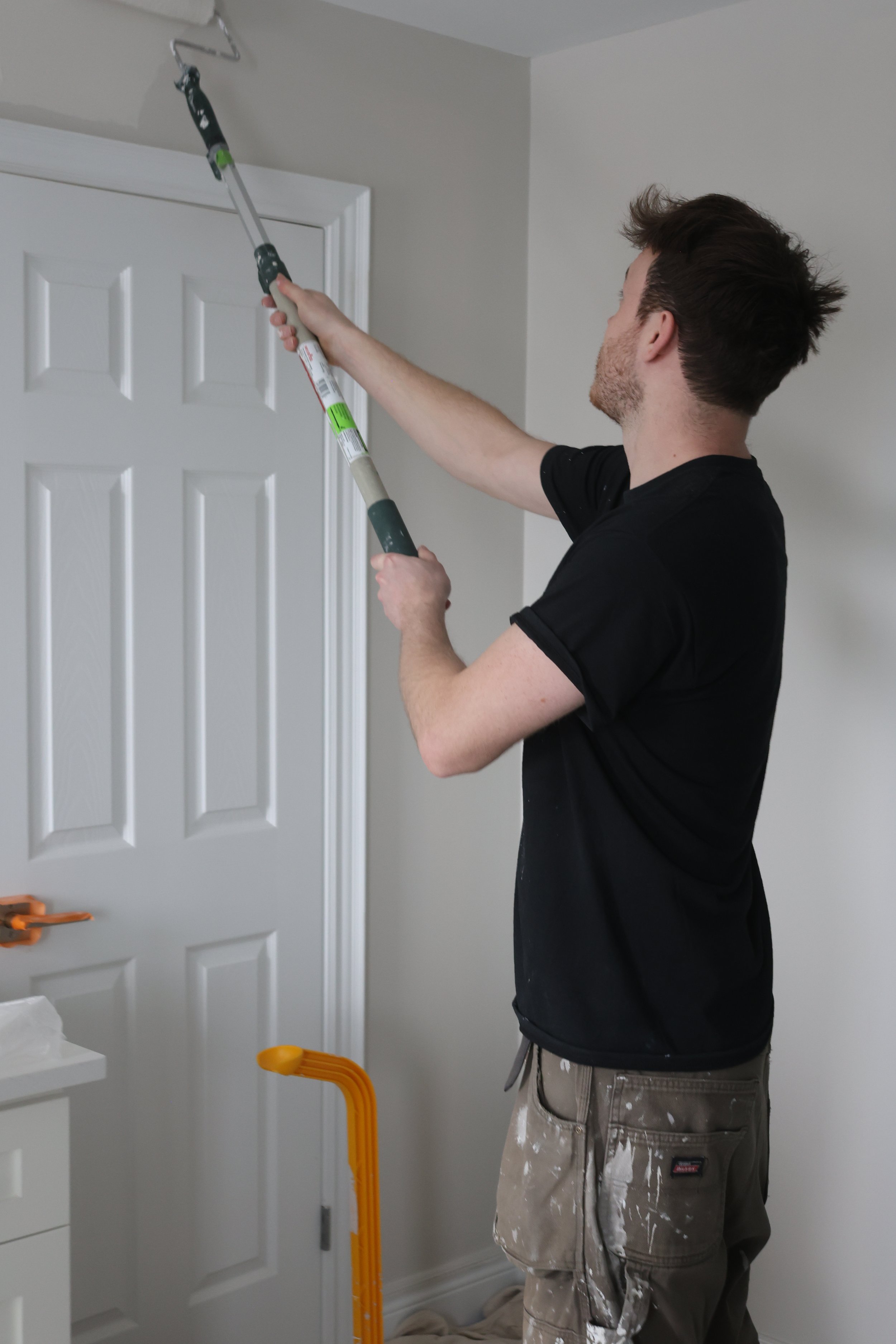
Building Independence, One Home at a Time
Expert accessibility solutions in Waterloo Region—grab bars, ramps, stairlifts, and more to make your home safe and barrier-free.
Our Accessibility Solutions
-

Accessible flooring
Safe, slip-resistant flooring designed for stability and ease of movement. Whether you need non-slip surfaces, seamless transitions, or wheelchair-friendly materials, we create flooring solutions that enhance safety without sacrificing style.
-

step in showers
Eliminate the risks of traditional tubs with our step-in showers. Featuring low or no-threshold entry, grab bars, and non-slip surfaces, our showers provide the perfect balance of safety, accessibility, and modern design.
-

accessible kitchens
Designed for convenience and independence, our accessible kitchens feature lowered countertops, easy-reach storage, and open layouts for wheelchair access. We make cooking and daily tasks effortless for everyone.
Our story
The journey behind our company is deeply personal. Andreas, the owner, knows firsthand the challenges that come with creating a home that meets the needs of a loved one with a disability. When his son was diagnosed, Andreas took it upon himself to completely renovate their home, installing accessible features tailored to his son’s needs. This experience sparked a passion for accessibility, and Andreas became dedicated to helping others create safer, more functional living spaces.
-
Using durable and smooth flooring can really help people with disabilities move throughout your home safely. Vinyl and laminate flooring are affordable options that also wear well.
-
As people age, navigating stairs can become increasingly challenging. Adding a ramp at the entrance to your home can make it much easier for aging parents to move around independently. This doesn’t have to be an expensive project. Affordable folding or portable ramps are available and can be easily moved when not in use.
-
Grab bars are simple yet effective hardware that provides additional support for individuals who need help with balance and stability when using a lavatory. They are typically installed near the toilet and in the shower or bathtub to provide additional support when getting up or sitting down.
-
Installing lever door knobs can make your doors much easier to operate, benefiting not only individuals with quadriplegia but everyone. Originally popularized in corporate settings and retail stores, lever door knobs have become a common choice in homes, especially for people with disabilities, due to their ease of use. Instead of having to grip a traditional doorknob with your whole hand, a lever knob simply requires you to press down, making it much more accessible.
-
Wheelchairs, walkers, and canes play a crucial role in helping individuals maintain mobility, but they often require more space to move comfortably. Unfortunately, many home doorways aren’t wide enough to accommodate them. Wheelchairs may struggle to pass through, while walkers might need to be tilted, which can lead to instability, reducing their effectiveness. Fortunately, this issue can be addressed by enlarging the doorways.
-
Think about adjusting closet rods to a lower height for easier access to clothing. Setting them approximately two feet above the floor can make it more convenient for individuals in wheelchairs.
-
As people age, family members may suggest that they move into a one-story home or apartment to avoid the challenges of navigating stairs. However, if your loved one is reluctant to leave their two-story home and needs to go upstairs, a stairlift can provide a simple solution.
-
Incorporate ramps and lifts. Installing ramps at stairs, curbs, and other raised areas is a key step in ensuring a home is accessible for wheelchair users.
-
For safety in case of an emergency, it's crucial to have multiple entry and exit points in your home. While many people install just one ramp, this may not be practical or safe for everyone. For instance, if you have a patio door at the back of your home and only one ramp at your garage, it's advisable to add another ramp at the patio door to ensure full accessibility and convenience throughout your home.
-
When we're healthy, kitchen countertops are typically the right height for our needs. However, as we age, we might begin to lean forward or need to reach them from a wheelchair. It’s a good idea to lower one of your countertops now to prevent potential difficulties in the future. While not all counters need to be adjusted, making this change to just one can greatly improve accessibility when it's needed down the road.
-
Making your bathroom space disability-friendly ensures greater accessibility and safety for individuals with mobility challenges. It can prevent accidents, promote independence, and improve the overall comfort of daily routines. Additionally, it can increase the long-term usability of the bathroom as needs change over time.
-
If you're able to use stairs but seek additional support, installing handrails on both sides of the staircase can provide the extra stability you need. Handrails offer valuable assistance in navigating stairs and can also be added in areas like kitchens and bathrooms to provide support when standing or sitting.
-
A walk-in shower is an excellent way to enhance your bathroom’s accessibility. By eliminating the need to step over a bath or high shower tray, it reduces the risk of trips and slips. This design makes it easier for people with mobility challenges or wheelchair users to access the shower. Also known as level-access showers, walk-in showers provide a seamless and safe experience, making them a valuable option when planning home improvements.
-
For wheelchair users, doorknobs can be difficult to operate, especially for those who have trouble gripping. To enhance accessibility, consider replacing doorknobs with push-pull bars or lever handles. Additionally, relocating the door locks can make them more accessible for those using a wheelchair or scooter.
-
Accessible bathrooms are essential for individuals with disabilities, providing a safe and comfortable space for daily routines. By incorporating features like grab bars, zero-threshold showers, and easy-to-reach fixtures, these bathrooms promote independence and reduce the risk of accidents. Investing in an accessible bathroom ensures long-term usability and peace of mind, making it a valuable addition to any home.
-
Lighting is often overlooked during home modifications, but it's essential to ensure proper visibility throughout your home from a seated, lower position.
-
To make your kitchen more accessible for wheelchair users, lower the countertops and sinks to ensure ease of use. Create space beneath the sink for wheelchair access and add pull-out shelves and drawers for better reach. Additionally, consider installing adjustable or pull-down cabinets to allow users to easily access upper storage areas.
-
Key features that contribute to an accessible restroom include spacious toilet stalls, accessible sink and toilet fixtures, properly positioned counters and basins, clear knee and toe space, grab bars, shower seats, and roll-in showers.
-
Ensure a clear path of at least 32 inches between furniture to allow for smooth movement. For added comfort, consider raising furniture to make sitting easier for some individuals. This can be done using furniture coasters or small blocks of wood attached securely to the legs.
-
A toilet riser can provide added convenience for individuals who struggle with bending or transitioning between sitting and standing.
-
Using voice-activated systems to control lights, the thermostat, and appliances simplifies everyday tasks for individuals with dexterity challenges, allowing them to create the perfect ambiance with ease. Strategically placed security cameras can enhance safety by helping you monitor activity around the house or identify visitors.
-
Replace thick carpets or rugs with smooth, low-pile flooring to allow for easier movement in a wheelchair. In wet areas such as bathrooms and kitchens, nonslip surfaces are essential to prevent slips and falls.
-
Working with a professional accessibility expert can offer essential guidance in creating a home that’s fully adapted to individual needs. When making modifications, it’s important to focus on safety, comfort, and inclusivity, ensuring that the living space is welcoming and accessible to all, regardless of mobility challenges.
-
As an alternative, consider installing a toilet frame, an affordable option that provides enhanced support and maneuverability for individuals with mobility challenges.


